Spotted Knapweed
- Composite or aster (Asteraceae family):
- Centaurea maculosa Lam.
- EPPO code:
- CENMA
- Other names:
- Knapweed, star thistle
Species information
- Lifecycle:
- Biennial, perennial.
- Propagation:
- Reproduces by seed.
- Emergence:
- Spotted knapweed seeds germinate when soil temperatures are above 7° C with peak germination around 22° C (Watson and Renney, 1974).
- Habitat:
- Spotted knapweed is found throughout Ontario, mainly along roadsides and fence lines. In certain parts of the province, though, particularly in Grey County, it can be found at high levels in pasture fields.
- Competitiveness:
- The weed reduces the quality of forage when contaminating pastureland. The plant is not very palatable and its roots exude an allelochemical (Pollock, 2009) that eliminates or reduces growth of other surrounding plants, which allows knapweed to thrive.
Identification clues
Seedling
- Cotyledons:
- Ovate to spatulate, short (25 mm) without a petiole.
- Young leaves:
- Its first leaves grow in a basal rosette in the first year; compound leaves are pinnately divided.
- Mature leaves:
- Stem leaves are alternate, slender and wiry, pinnately divided, and grey-green in colour.
Mature plant
- Stems:
- Mature spotted knapweed has an erect, much branched stem that grows up to 1.5 m tall. Stems have a grey green colour.
- Flowers:
- Its flower heads are round, 3–4 cm in diameter and made up of several slender light purple-magenta "petals" (disk florets) with the outer ones being longer than the central ones. Underneath and attached to the flowering head are distinct bracts, triangular shaped with brown vertical lines and blackish-brown tips and margins with a fine fringe of comb tooth-like bristles.
- Seeds:
- The seeds of spotted knapweed are brown, 2 mm long and angled towards the base. They have a moustache-like pappus at the apex.
- Roots:
- Woody taproot.
Often mistaken for
I know it's not Brown knapweed because the bracts at the base of the showy flowers on brown knapweed are light brown with membrane-like margins, while the margins of spotted knapweed have a fine fringe of comb-tooth-like bristles.
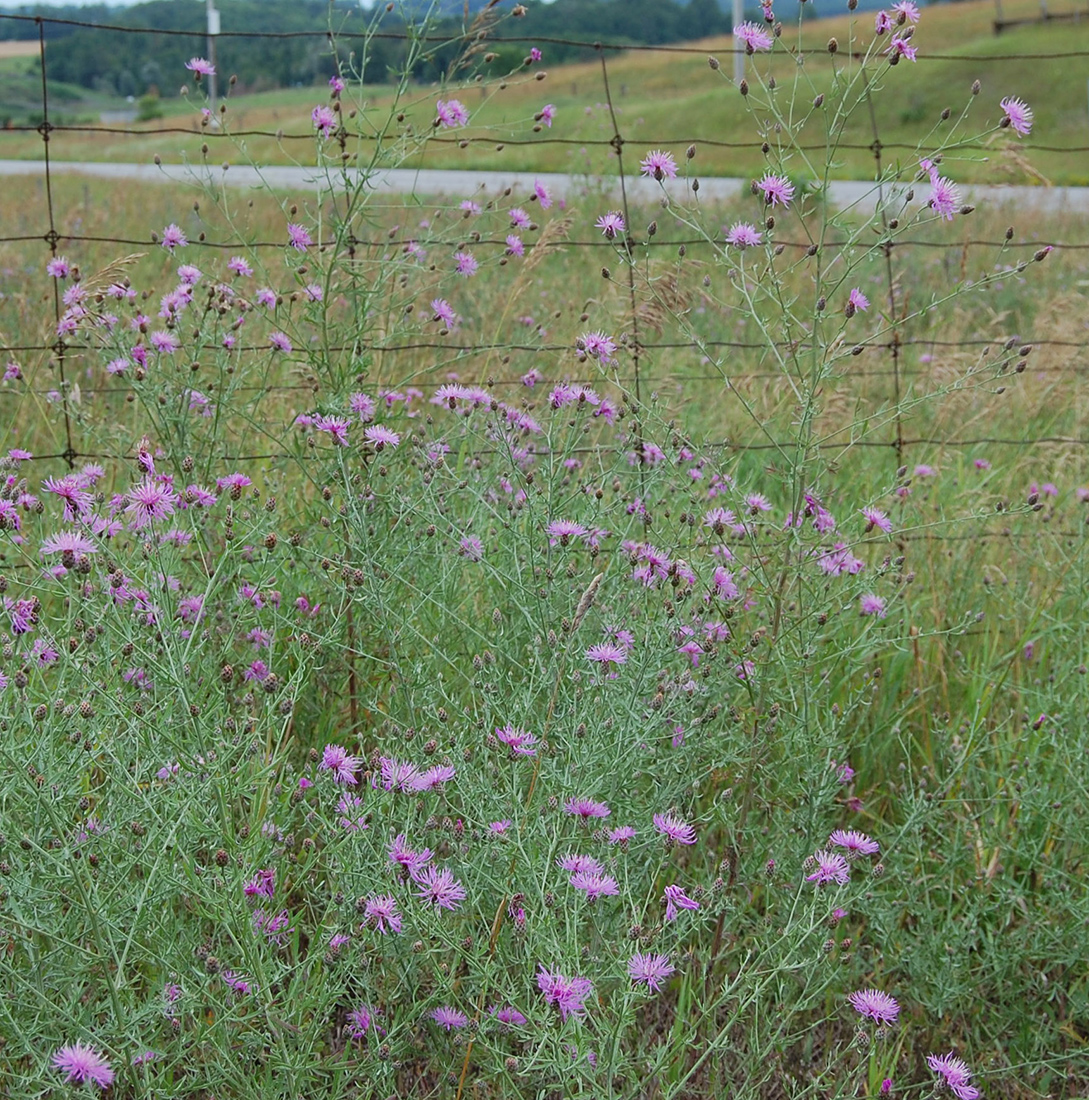
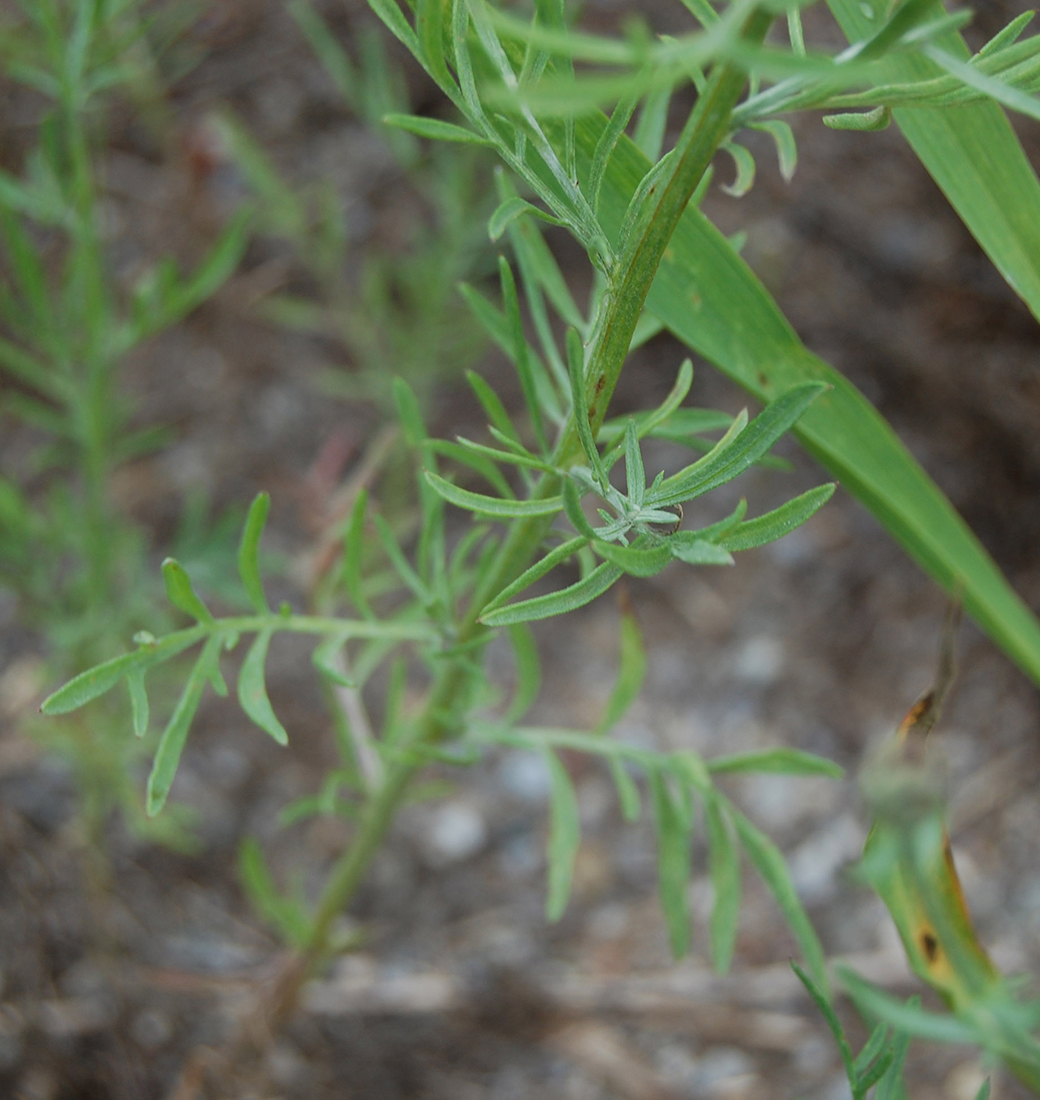
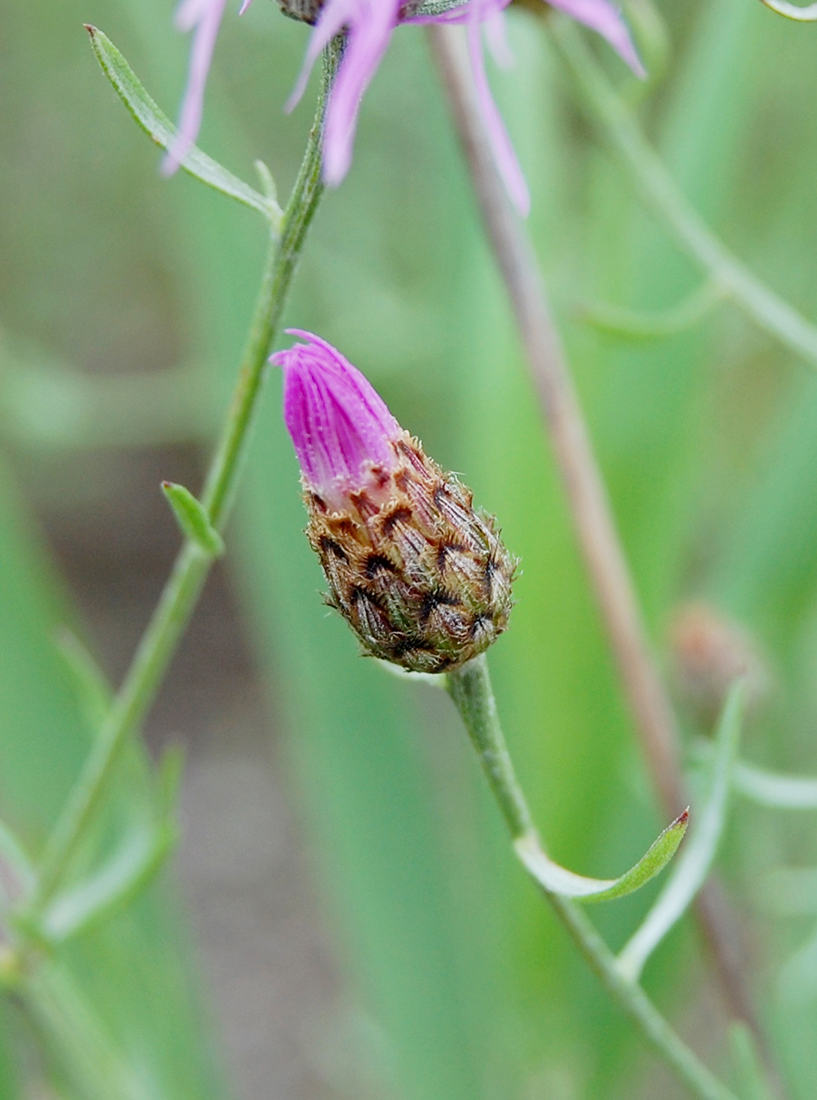
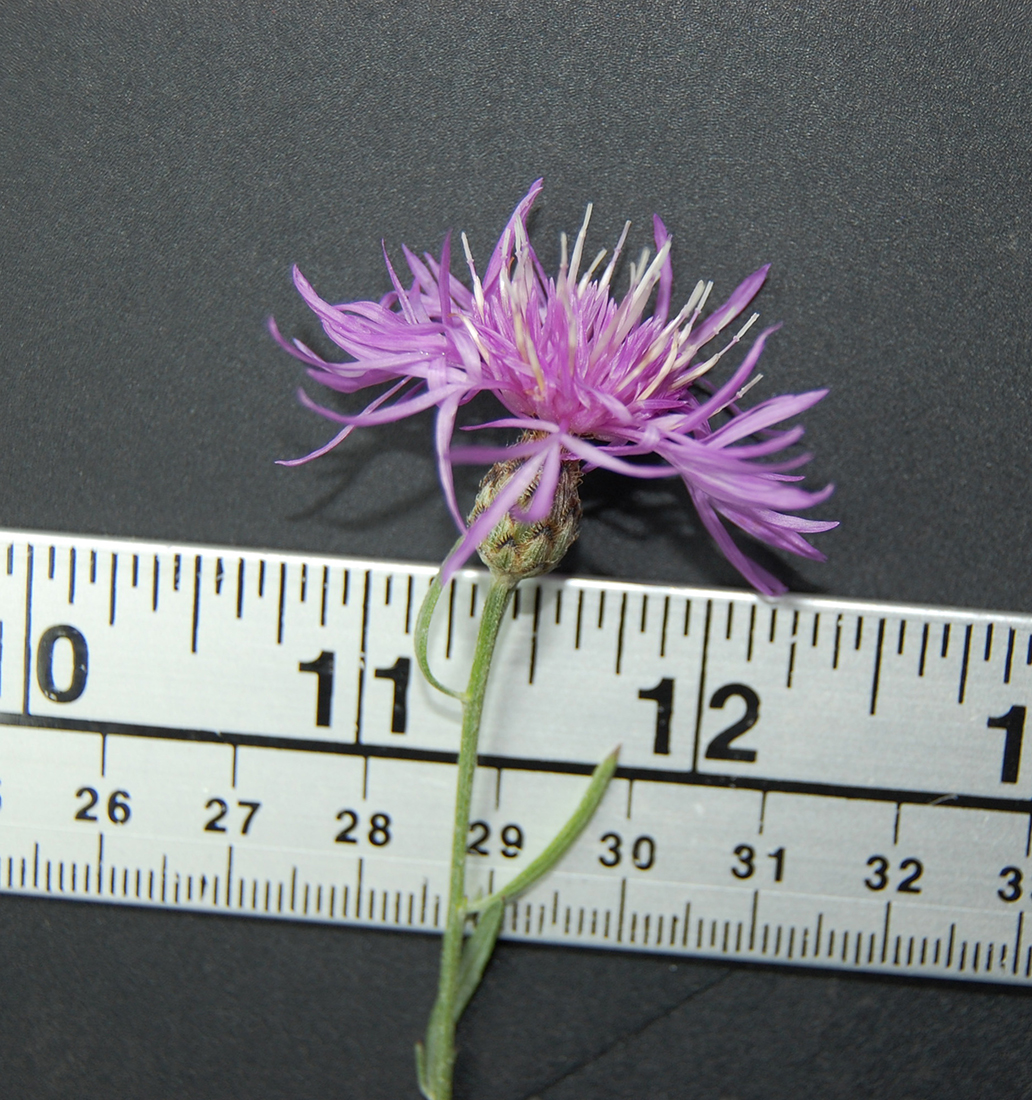
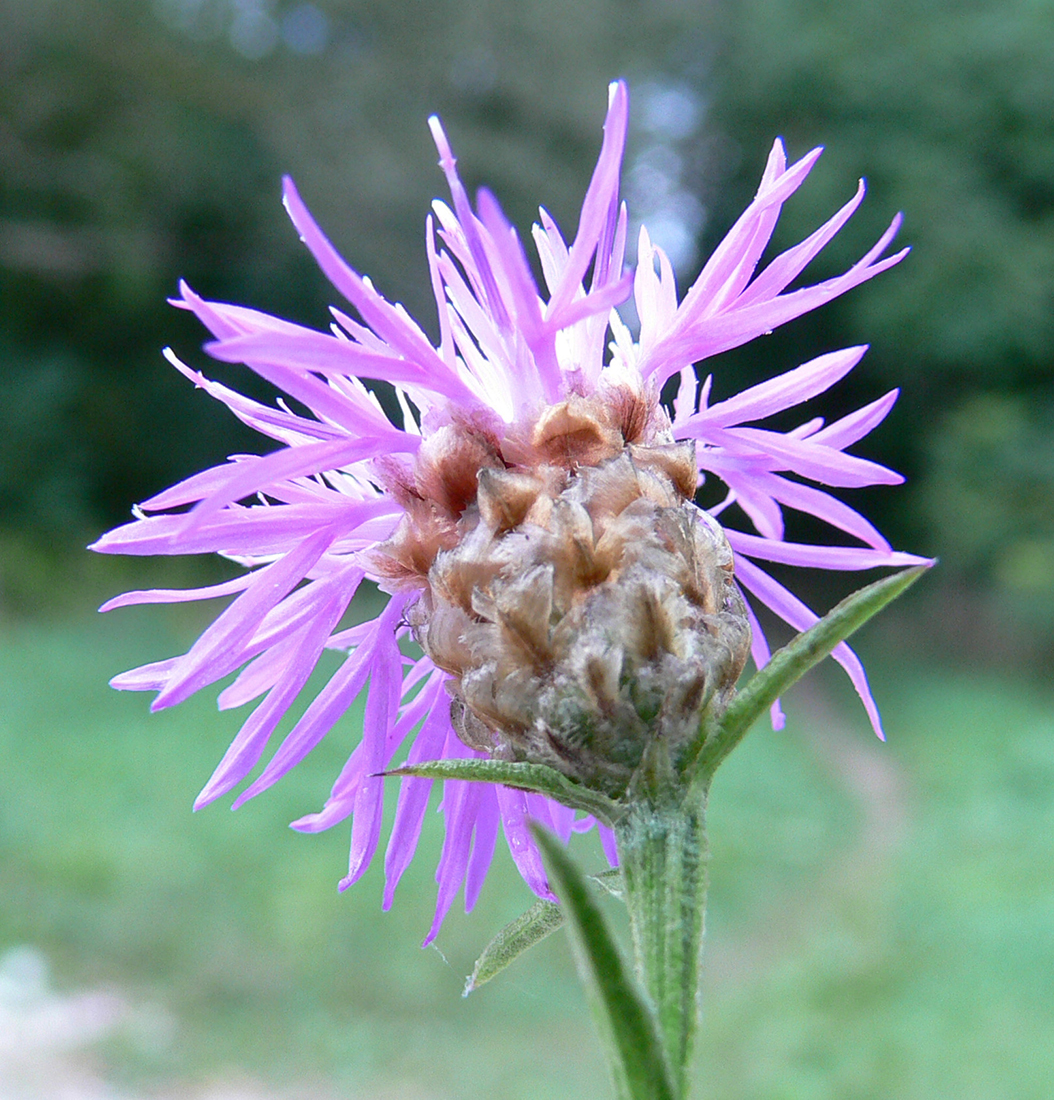
Updated: January 13, 2023
Published: January 13, 2023